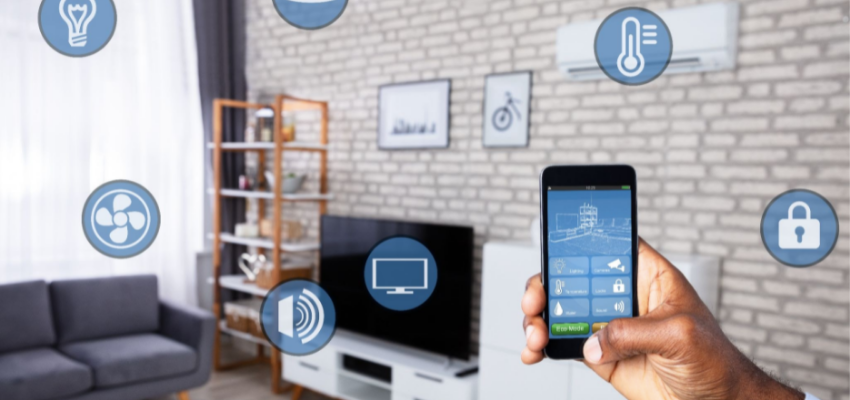Guide to Smart Home Tech Safety

Today, advancements in technology have made home automation available at our fingertips. From turning on lights when you’re not home to adjusting your thermostat and managing security cameras, there are a number of gadgets you can now rely on to create a more efficient and smarter home. You can even use it to monitor and reduce your energy use.
However, like most conveniences, this technology can also present dangers and challenges for its users. All smart home products are connected to the Internet, making you susceptible to rising cybercrime. If you’re one of the 250 million worldwide users of smart home products, keep reading to ensure you, your family, and your home are safe.
What are the risks?
Whenever you connect to the Internet, you are at risk for a cyber attack. Hackers have been able to hijack camera monitors and access webcams, learn passwords and financial information, and control devices from thousands of miles away. Make sure whatever devices you are syncing with your information to have substantial built-in security or you’ll be more susceptible to a malware attack.
How to protect you and your family
Protecting your information is more simple than you may realize and it starts with your Wi-Fi. No matter how many smart home products you’re connecting to your network, the first step is to have a secure Wi-Fi that is password protected.
Here are a few additional tips:
- Give your router a unique name — many routers come with a name that identifies its make and model. Apply a new name to it that is free of any personal information such as last name or address.
- Change your Wi-Fi password — similar to the router name, manufacturer-designed passwords can make it easier for hackers to infiltrate your network.
- Set up a guest network —your Wi-Fi network should be private and sharing your password with friends and guests is discouraged. Consider establishing a separate network that isn’t tied to your main Wi-Fi. If you’re not able to do this, you should at least change your password after you’ve had guests stay with you and use your Wi-Fi.
- Use a strong password — hackers are skilled in knowing the common passwords and identifying personal information to break into your network. A combination of letters, numbers, and symbols is encouraged; and be sure to avoid using any identifying words or numbers such as birthdays or pet names.
- Double-check the settings on your devices — the default privacy settings may be putting you at risk without even realizing it. Before connecting your device, check the security settings it came with to be sure you’re not sharing any personal information and to disable any features you may not need such as remote access.
- Update your software — manufacturers are constantly making security updates to devices so be sure to install the latest version as soon as you get the notification.
- Set up two-factor authentication — many devices now allow a 2-step process to connect to a network or log in to a device such as sending a code to your cell phone. This added step can help deter hackers.
- Avoid public Wi-Fi — as tempting as it may be to access public Wi-Fi on the go, it’s not a good idea. Any time you connect to a public network you are putting your information at risk.
- Monitor your children’s use — with kids spending more time on devices for school and in general, it’s important to make sure there are appropriate age settings. Hackers will often find their way in through what seems like a harmless website or video for kids.
Additionally, you may want to consider a cyber insurance policy for added coverage. This will give you peace of mind knowing that if you do experience a security breach, you’ll be protected.
Contact one of our agents today for a no-obligation review of your policy. Our goal is to be sure you have the best coverage for you and your loved ones.
Back to Blog